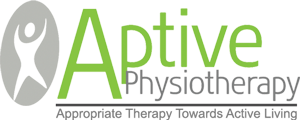The Road To Recovery
After surgery for a broken collarbone, physiotherapy is vital for regaining strength.
Ms Pauline Khoo from Aptive Physiotherapy applying pressure on Biker Boy’s left shoulder to loosen up the muscles after his surgery for a broken collarbone. TNP PHOTO: SALWA NADHIRAH
If you tumble off your motorcycle, do not be too quick to brush off the pain as something minor or get back on the road. Take it from me.
In February, I landed hard on my shoulder after sailing over my dirt bike’s handlebar. I thought it was a shoulder sprain, but it turned out to be a broken collarbone.
After surgery, I now have a titanium plate and five screws to support my left collarbone.
The road to recovery is a long one, especially when I am itching to ride again.
Regaining your strength and confidence following a major injury also requires the help of physiotherapists like Ms Pauline Khoo from Aptive Physiotherapy.
The 29-year-old, who primarily sees patients with sports-related injuries and those who get hurt from two-wheel activities, said it is vital to let a broken or fractured bone heal on its own.
Ms Khoo, who runs the physiotherapy clinic at Far East Shopping Centre with her partner, told The New Paper: “(It is tricky) when the cyclist or motorcyclist are enthusiasts and eager to return to their sports when they are not yet ready.”
The majority of the cyclists and bikers she treats suffer from contusions or fractures.
She works on injuries to the muscles, joints, nerves, ligaments and tendons. She also treats patients with neurological conditions, such as stroke and Parkinson’s disease.
Those who suffer broken collarbones may take between four and six months to recover. Complications can arise when the broken bones do not align or fail to heal.
Ms Khoo said: “This will affect the movement of the shoulder, limiting the ability to attain the full range of movements, and it is associated with weakness.
“Rehabilitation after a surgical procedure to fix the fracture is important to regain the adjacent joints’ full range of motions and strength, ensuring correct movement patterns and muscle coordination.”
Still, I am a little anxious. The older you get — I am 46 — the longer it takes to heal a broken bone.
Also, the type of fracture and failure to stick to exercises may affect the progress of rehabilitation.
As such, despite some discomfort, I have been diligently performing the eight stretching exercises Ms Khoo recommended.
I am told that if I do not exercise, the muscles in my left shoulder and hand will “waste away”.
I am also getting used to electrotherapy, where mild electric current is fed to my shoulder tissues to lessen the stiffness.
MISUNDERSTAND
Despite having a Bachelor of Physiotherapy from the University of Queensland, Ms Khoo — who has worked in a hospital and accumulated six years of work experience — said some patients still misunderstand her profession.
“Some people think we just do massages or teach exercises. But we actually do a lot more to help with the rehabilitation,” she said.
After assessing the patients, Ms Khoo advises them on the loads they are permitted to lift using the injured limb and how far they should move that limb.
The fact is, physiotherapists like Ms Khoo work closely with orthopaedic doctors, consulting each other on the best way to rehabilitate a patient.
Ms Khoo has been on the receiving end — she was a patient of bone specialist Chong Kian Chun.
Today, she is working with him.
In 2006, while in junior college, Ms Khoo suffered a damaged tendon in her left knee from field hockey training. She underwent an anterior cruciate ligament reconstruction surgery under Dr Chong.
After recuperating from the surgery and undergoing physiotherapy, she made up her mind to pursue physiotherapy as a career.
As for me, I am still a long way from being 100 per cent.
But after four physiotherapy sessions, I am beginning to see improvements — I am now able to raise and move my left hand naturally. In no time, I will be back in the saddle and working the clutch lever to bring you more bike reviews.
ZAIHAN MOHAMED YUSOF
biker boy
zaihan@sph.com.sg
"Source:The New Paper © Singapore Press Holdings Limited. Permission required for reproduction"

